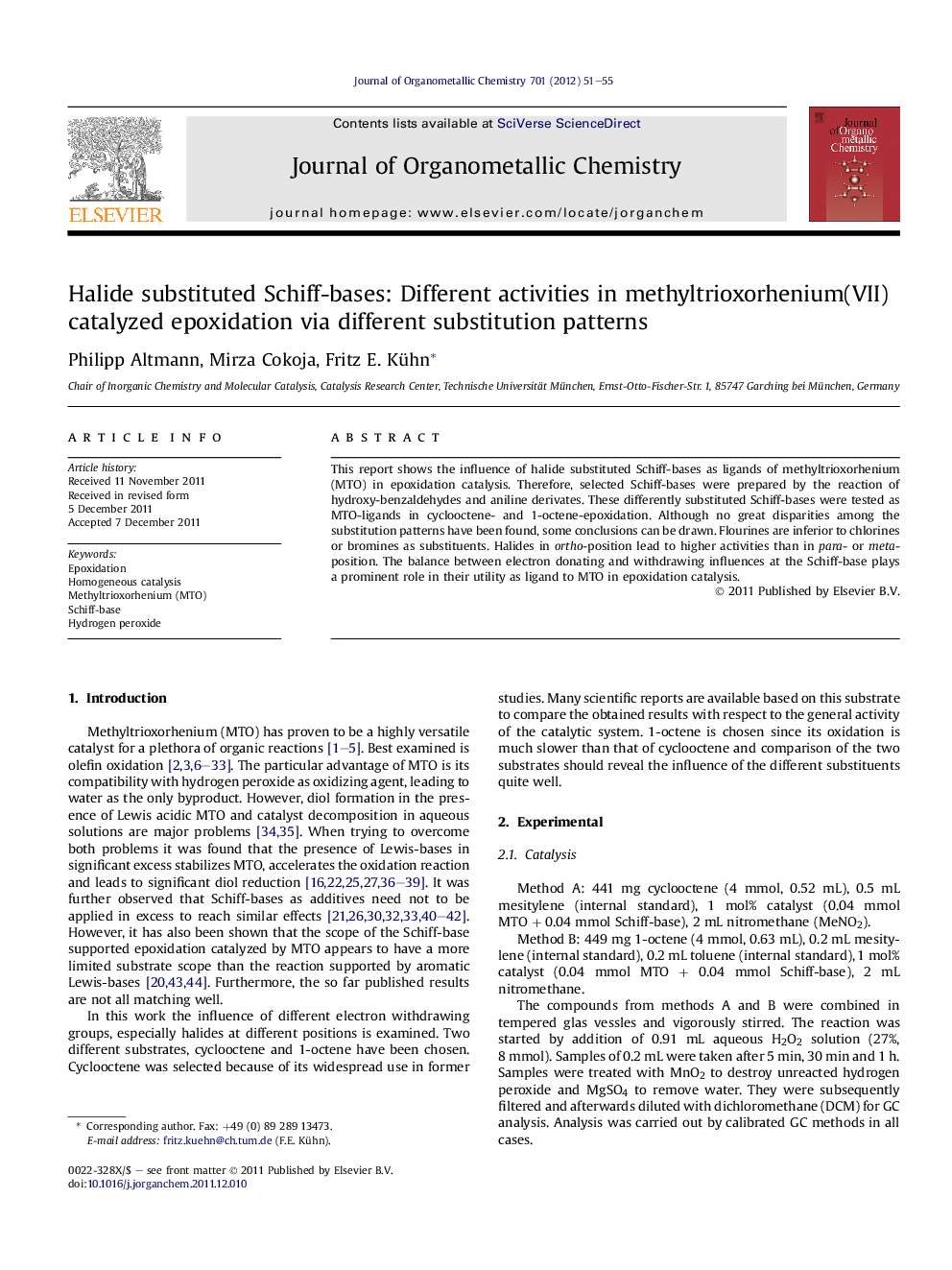| Article ID | Journal | Published Year | Pages | File Type |
|---|---|---|---|---|
| 1324105 | Journal of Organometallic Chemistry | 2012 | 5 Pages |
This report shows the influence of halide substituted Schiff-bases as ligands of methyltrioxorhenium (MTO) in epoxidation catalysis. Therefore, selected Schiff-bases were prepared by the reaction of hydroxy-benzaldehydes and aniline derivates. These differently substituted Schiff-bases were tested as MTO-ligands in cyclooctene- and 1-octene-epoxidation. Although no great disparities among the substitution patterns have been found, some conclusions can be drawn. Flourines are inferior to chlorines or bromines as substituents. Halides in ortho-position lead to higher activities than in para- or meta-position. The balance between electron donating and withdrawing influences at the Schiff-base plays a prominent role in their utility as ligand to MTO in epoxidation catalysis.
Graphical abstractThe MTO catalyzed cyclooctene- and 1-octene-epoxidation was examined in the presence of halide substituted Schiff-bases. The different substitution patterns can have a significant influence on the catalytic activity.Figure optionsDownload full-size imageDownload as PowerPoint slideHighlights► MTO catalyzed cyclooctene- and 1-octene-epoxidation was examined. ► Halide substituted Schiff-bases were used as additives. ► The different substitution patterns can have an influence on the catalytic activity. ► Bromines and chlorines are superior to fluorines or nitro-groups. ► Nitromethane is a better solvent than other common solvents like dichloromethane.
